I. What is Endocrine System Anatomy?
Think of this as your baby step to Grey’s Anatomy, a book you’ll be holding real soon (sorry we’re not mentioning the show but shout out to the queen Dr. Merideth!). Jokes aside, learning about the endocrine system anatomy makes learning about hormones and how they work much easier!
Endocrine system anatomy is exactly what it sounds like: referring to the various organs that comprise the endocrine system and release hormones to cause physiological change and ultimately maintain homeostasis within the body.
Although it’s more crucial to understand the different functions of the hormones throughout the body, you should also be familiar with the various organs that comprise the endocrine system so that you at least have a starting point to where the hormones originate. Think of this article as a little summary of all the organs and hormone interactions which we’ll cover more in depth in other articles.
II. Content Review
Just as a little side note before we begin listing and briefly describing the various organs, it might be better to call them glands when utilized in an endocrine context. Using the term gland is a bit more specialized, as it refers to a body part which releases something, in this case hormones.
A. Hypothalamic-Pituitary Interactions
We’ll divide the different organs when listing and describing them. As you’ll see in the diagram below, we’ll start with the hypothalamic-pituitary interaction as many hormonal interactions actually originate in the hypothalamus!
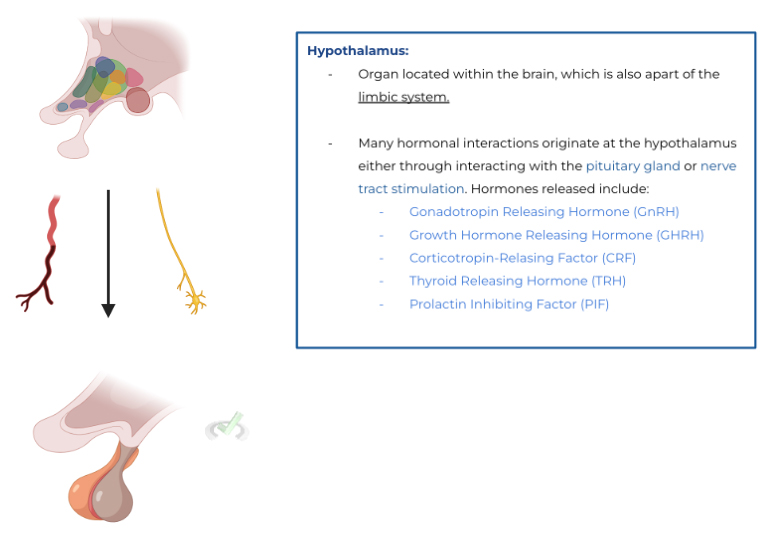

B. Pituitary to Whole Body Interactions
Following the hypothalamus, the pituitary gland is also responsible for much of the hormonal interactions that occur throughout the body!
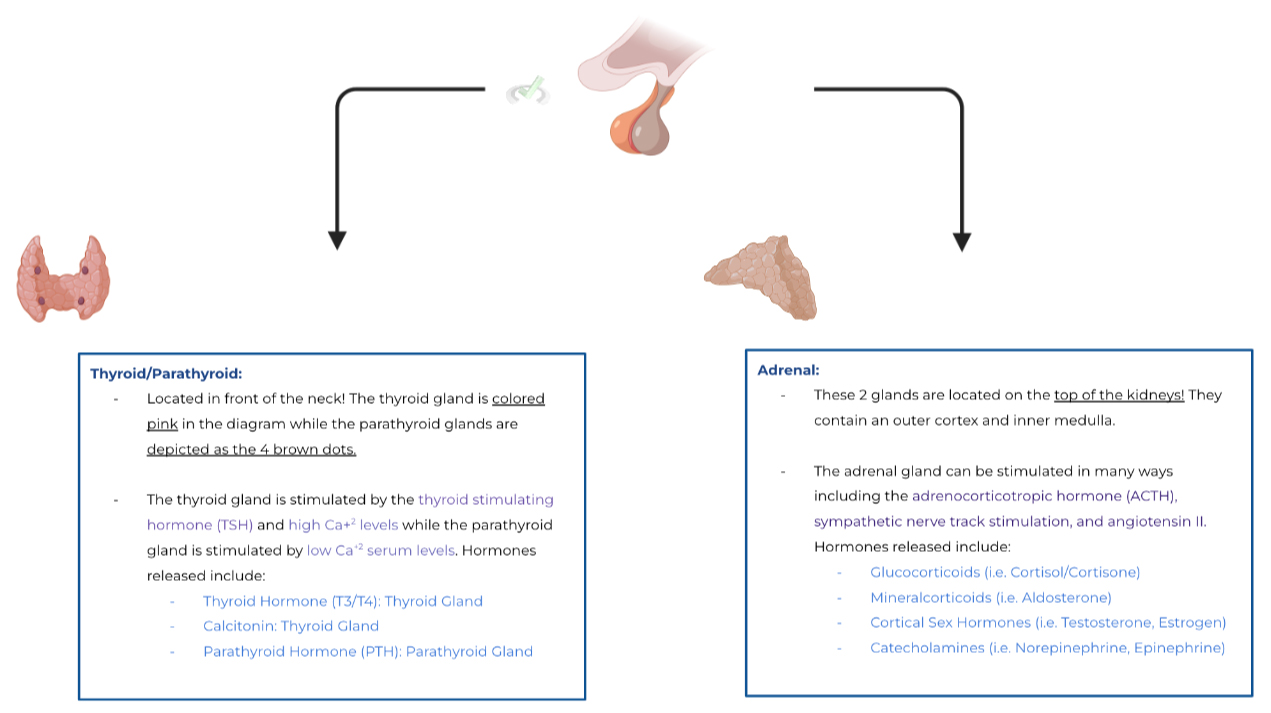
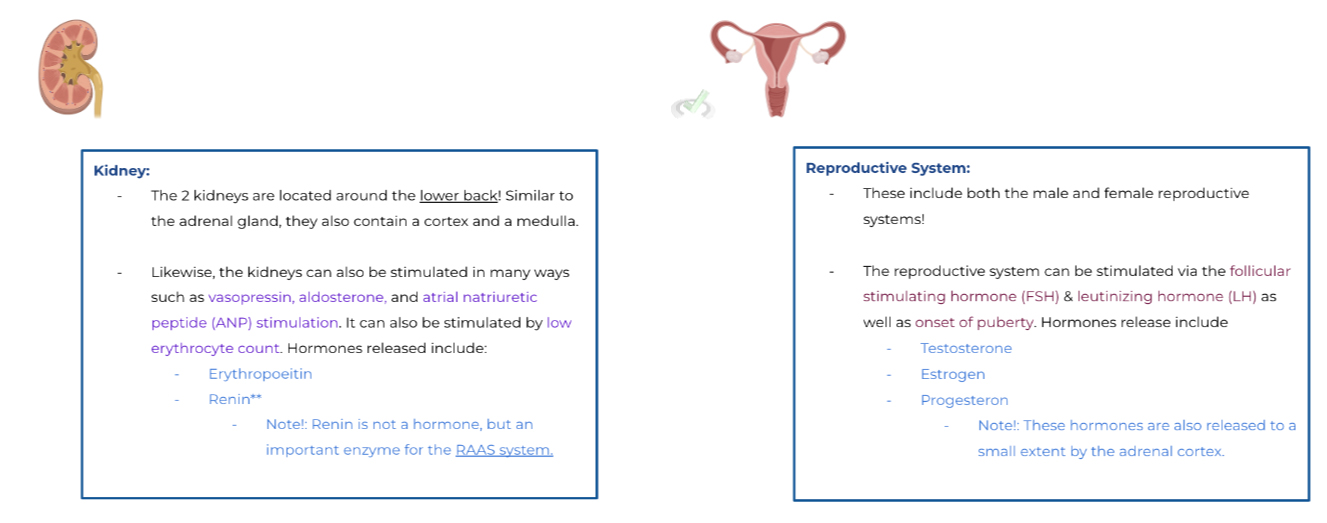
C. Outside Hypothalamic-Pituitary Interactions
As stated in the title, these types of hormonal interactions occur outside of hypothalamus and pituitary gland stimulation, where hormonal release from these endocrine glands will usually be in response to a physiological change that occurs within the body.

III. Bridge/Overlap
While it’s definitely important to understand the different endocrine glands that comprise the endocrine system as well as the function of the various hormones, it's equally important to know how these gland and hormonal interactions are regulated. The endocrine system’s main function in its essence is to maintain homeostasis within the human body.
Feedback pathways refer to biological pathways in which a downstream molecule can “feedback” and affect a step earlier in the pathway. There are two feedback pathways you need to become familiar with:
Positive Feedback
Occurs when downstream molecules/effects in the hormone pathway “feedback” into an earlier step and further activates that step so as to further promote the downstream molecules/effects.
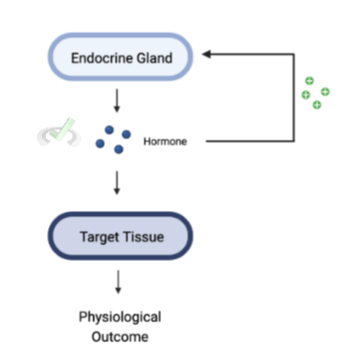
Negative Feedback
Occurs when downstream molecules/effects in the hormone pathway “feedback” into an earlier step and further deactivates that step so as to inhibit any further downstream molecules/effects.
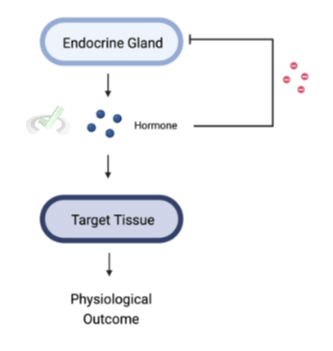
IV. Wrap Up/Key Terms
Let’s take this time to wrap up & concisely summarize what we covered above in the article!
A. Hypothalamic-Pituitary Interactions
Hypothalamus
Neuroendocrine organ which is located within the brain and is also a part of the limbic system! The hypothalamus will interact with the pituitary gland either via tropic hormones or nerve tract stimulation.
Pituitary Gland
Can actually be divided into the anterior and posterior pituitary gland!
B. Pituitary-Whole Body Interactions
Thyroid/Parathyroid Gland
Adrenal Gland
Kidney
Reproductive System
C. Outside Hypothalamic-Pituitary Interactions:
Thymus
Pancreas
Feedback Pathways
Definition
Biological pathways in which a downstream molecule/effect can “feedback/loop back” into an earlier step in the pathway and either promote or inhibit that step.
Positive Feedback
Occurs when the earlier step is PROMOTED and causes the further production of the downstream molecule/effect
Negative Feedback
Occurs when the earlier step is INHIBITED and causes the further production of the downstream molecule/effect
V. Practice
Take a look at these practice questions to see and solidify your understanding!
Sample Practice Question 1
As you’ll learn in subsequent sections, the release of oxytocin produces downstream molecules which ultimately results in the production and release of more oxytocin. This can be best described as a ___________ feedback pathway, because the downstream molecules will loop back to ___________ an earlier step in the pathway.
A. Positive, Promote
B. Positive, Inhibit
C. Negative, Promote
D. Negative, Inhibit
Ans. A.
The question stem is a perfect description of a positive feedback mechanism. This is because the downstream molecules/effects of the pathway cause the further release of oxytocin!
Again, this can be thought of as the downstream molecules/effects “feeding back/looping back” into an earlier step in the pathway and promoting that earlier step.
Sample Practice Question 2
Which of the following endocrine organs should be very active after eating a meal consisting of a vanilla ice cream with oreo cookie crumbles and caramel drizzle? (sounds like my kinda cheat day!)
A. Adrenal Gland
B. Reproductive System
C. Thymus
D. Pancreas
Ans. D
When considering the high carbohydrate/sugar intake from the meal (trust me, I was drooling just writing the question), it should be expected that the pancreas will be the most active endocrine organ as it needs to regulate and adjust for the rise in blood sugar.
The other endocrine glands have no function in regulating blood sugar levels or even in any digestive function.







 To help you achieve your goal MCAT score, we take turns hosting these
To help you achieve your goal MCAT score, we take turns hosting these 





















 reviews on TrustPilot
reviews on TrustPilot